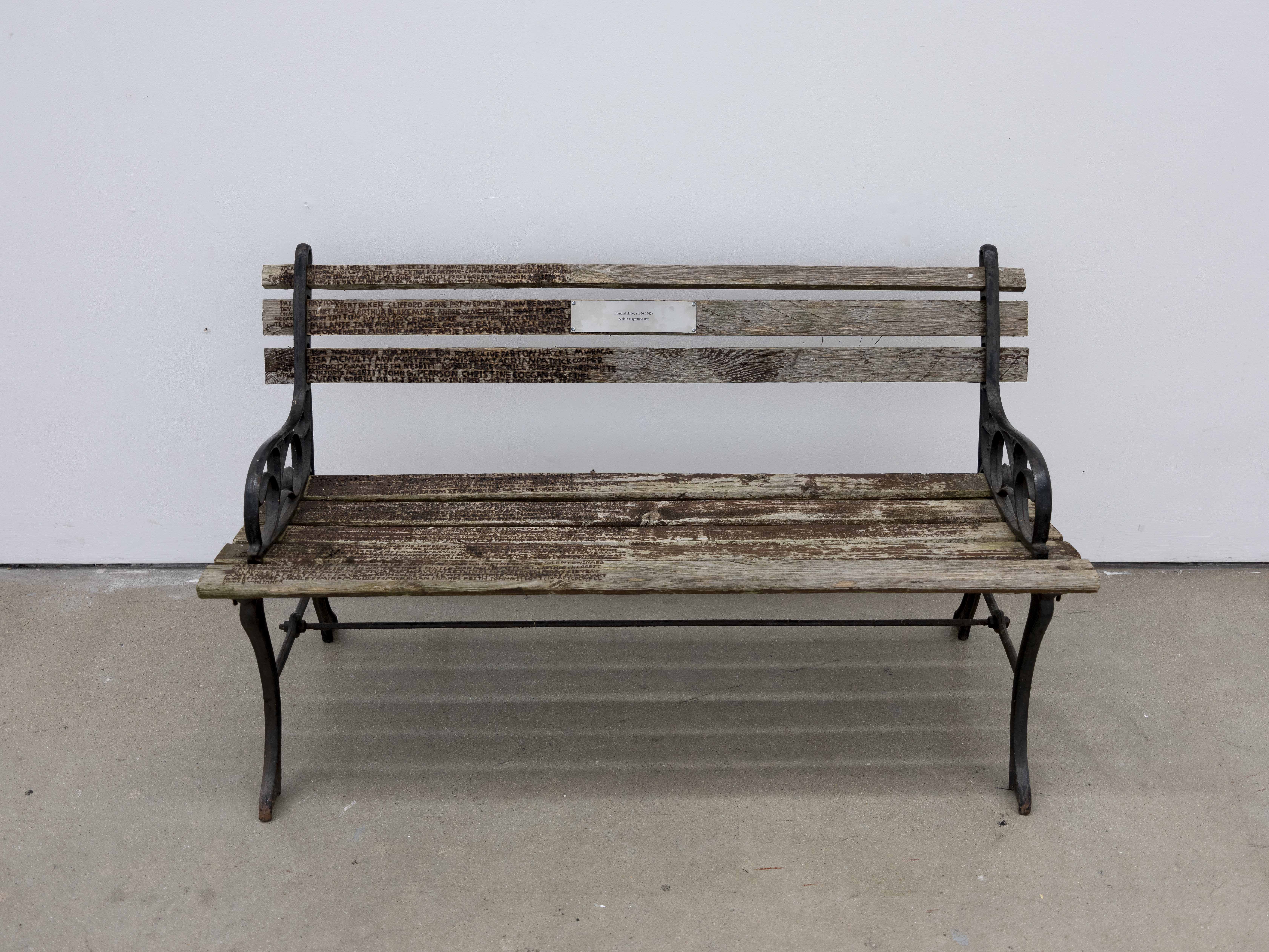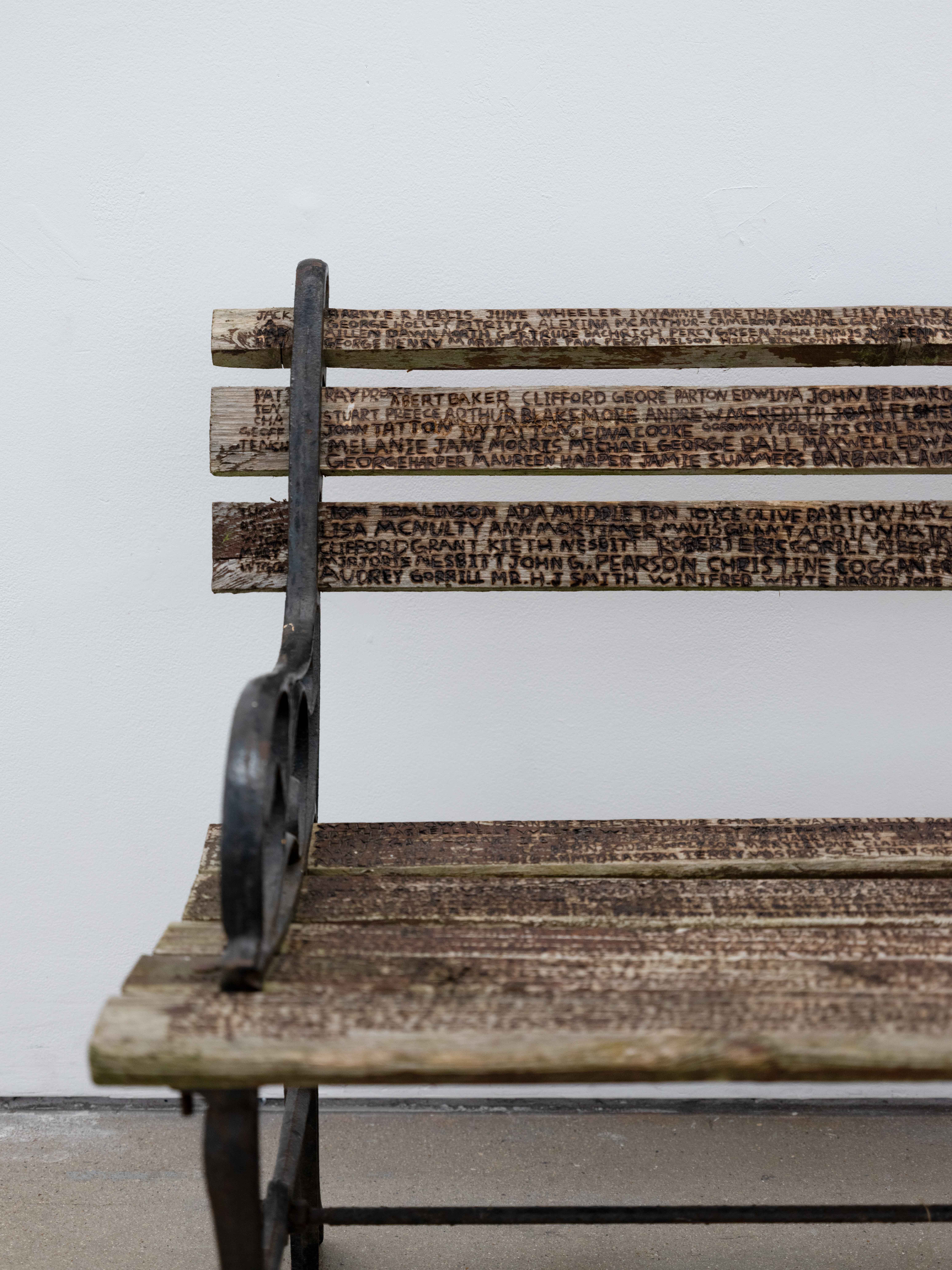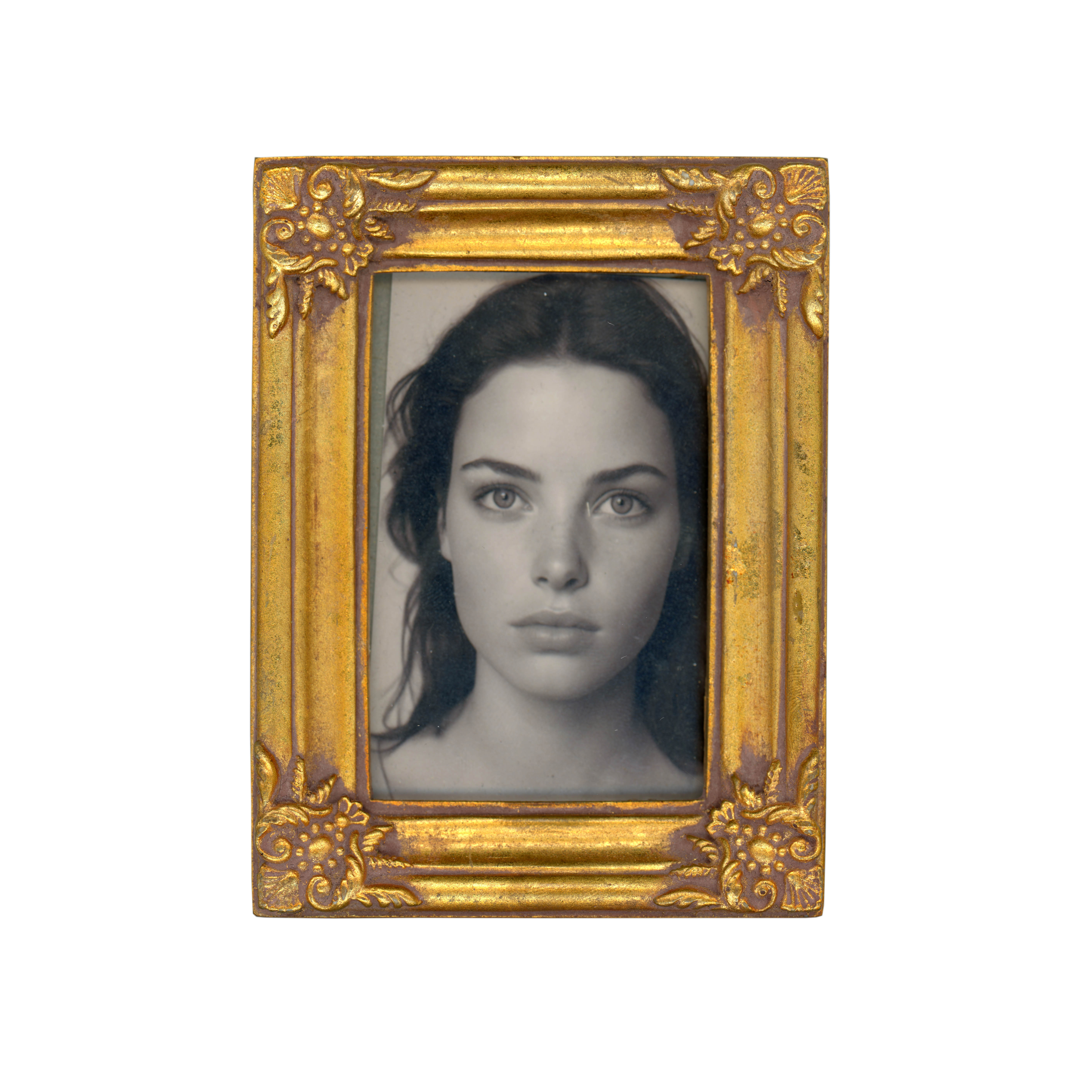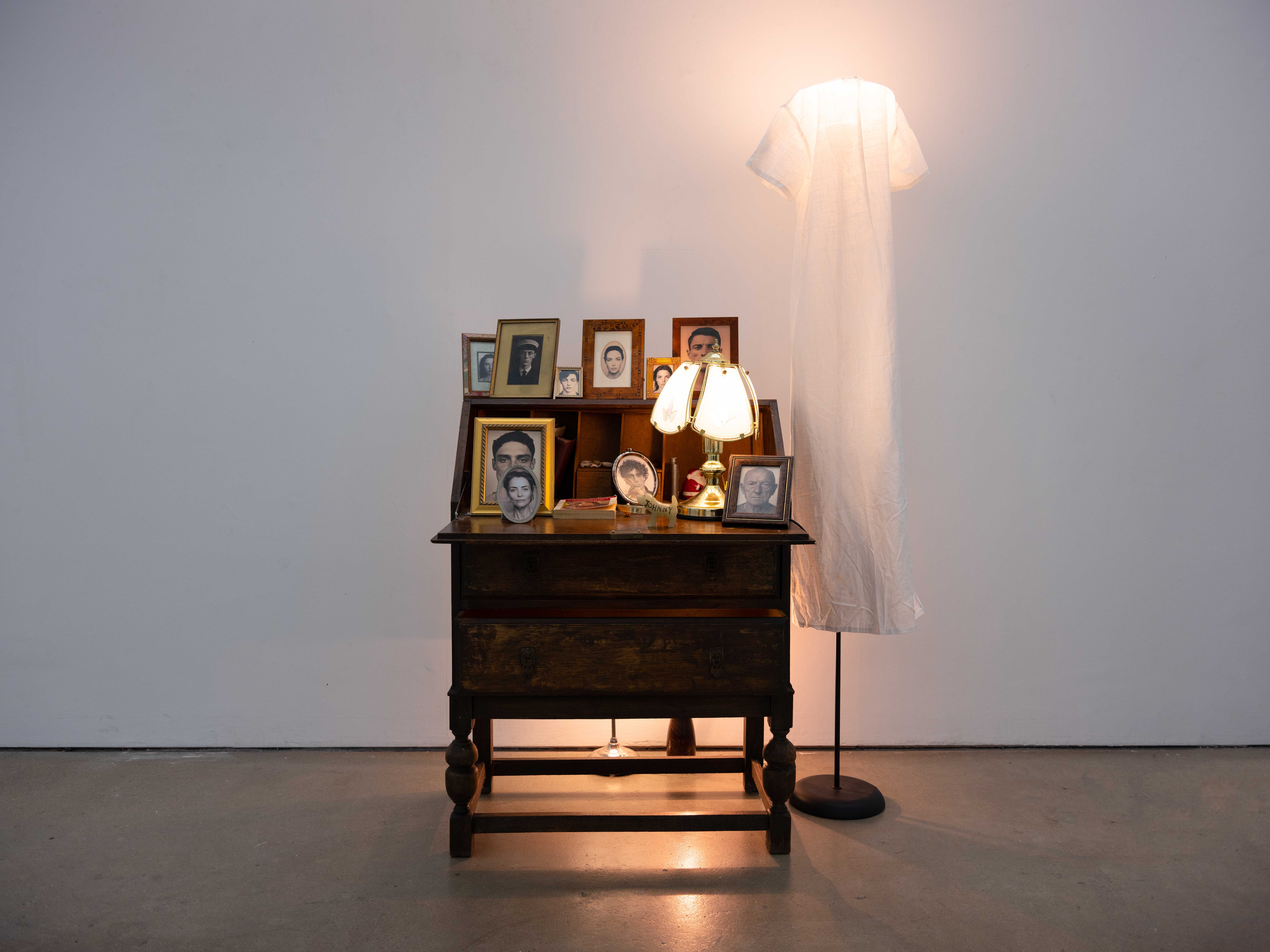


As an outsider, especially from the East, I am very curious about this form of “spiritual” survival, because in the East, dead relatives/ancestors mostly become a guardian deity of the family, worshipped and revered. At the same time death is a taboo subject in China, for example cemeteries in China have a negative connotation and almost no one in China goes to cemeteries except to pay their respects and offer condolences on a fixed date, everyone avoids them. In the UK, the line between cemeteries and parks is blurring. Many cemeteries are located in the middle of the city, runners pass through them, old people sit in chairs next to them and read the newspaper, children play soccer and juggle where there are no tombstones. It's not a no-go area, but rather blends in as a public space in every street and alley in the city.
I found a number of benches with nameplates throughout the UK, some of them located in the city's parks, others on the seafront and at tourist attractions. The nameplates probably commemorate people who have passed away, and in addition to their names, some of the benches have a short biography of the people who belonged to them, as well as a few sentences that they would like to pass on to future generations. Some of these sentences are about their favorite authors, or about their feelings about life. Then there are excerpts from their favorite poems. They donated the benches to public spaces as a kind of monument, so that their families and strangers could remember and imagine them again. Since then, I have been collecting the names on these benches from all over the UK and the information they provide on their nameplates.
Since the outbreak of the epidemic and the lockdown of the city, death has been cold and hard in my senses. I am afraid of this cold and hard, as well as death full of uncertainty, so I try to present the warm and soft side of death. By collecting benches from the south side of England, letter tables from the west side, and wooden floors from the north side, I have created a space full of private human traces. These traces do not point to a clear narrative thread or to a particular deceased person, but rather show the traces left by human beings under the passage of time.
There are more than just objects in this space, but I have also placed some “last photos”. These are generated by AI according to the names and information I have collected, each with its own meaning and cultural background. I used Chatgpt and Minjourney to generate these stills, which are my shared imaginings with the AI for the different names that have a basis in the AI's role as a tool, which doesn't have the ability to be aware of death and understand it. For it, human behavior and thought are deconstructed into the most basic logical constants - 0 and 1. The living are the data that is being updated, and the dead are the data that is not being updated. These photos are a result of my use of AI to think about and visualize death.
In this work, I emphasize the properties of these installations as “monuments”. These “monuments” seem to point to a number of individuals who died in the UK, but in fact they point to the human civilization behind these individuals. Voyager 1 was launched with a 'golden record' of most human languages, cultures, sounds and images. If it is ever intercepted by an alien civilization, this “golden record” will be all they need to know about human civilization. Different civilizations have been creating monuments of all kinds to present the historical memories and significant events of a particular culture. Does the human race as a whole need a monument like the “Golden Record” for all of humanity?
哈雷在1705年预测出有一颗彗星会在1758年回归,在余生中,他一直等待着两件事情的到来,死亡和彗星。对于我们来说,死亡就像已经被预测好的彗星,它或许会如期而至,又或许会出现在任何平凡的一天。
作为一个外来者,尤其是从东方的外来者,我对于这种“精神”的留存形式感到非常好奇,因为在东方,死去的亲人/祖先大多是成为了家族的一个守护神,被供奉和敬畏。同时死亡在中国是一个避讳的话题,例如在中国墓地所代表的含义大多是负面的,而且除了在固定的日期去祭拜和吊唁之外,几乎没有中国人会特意去墓地,所有人都避而远之。在英国,墓地和公园的界限逐渐模糊。许多墓地位于城市的中央,跑步的人穿墓地而过,老人坐在墓地旁的椅子上看报纸,孩子们在没有墓碑的地方踢球,打闹玩耍。这里并不是禁区,而是作为公共空间融入在城市中的每个街头巷尾。
我在全英国境内找到了一些带有铭牌长椅,他们有些位于城市的公园内,有些位于海边和旅游景点。铭牌的内容大概是纪念某些已经去世的人,除了这些人的名字,一些长椅还有属于这些人的生平事迹,以及她们想要留给后人的几句话。这些句子的来源有些是关于他们最爱的作家,或是对于生活的感悟。再其次就是摘抄于他们最爱的诗句。他们将这些长凳捐赠至公共空间,作为一种纪念碑,让自己的家人以及陌生人能够再去回忆和想象起他们。从此之后,我开始从全英国收集这些长凳上的名字,以及他们在铭牌上所提供的信息。
自从经历了疫情的爆发和城市的封锁之后,死亡在我的感受中是冰冷和坚硬的。我害怕这种冰冷坚硬,以及充满不确定性的死亡,所以我尝试去呈现死亡温暖而又柔软的一面。从英格兰南边收集的长椅,西边收集的信桌,北边收集的木制地板,我创造了一个充满人类私人痕迹的空间。这些痕迹并没有指向明确的叙事线索,或是指向某一的逝者,而是显示在时间流逝下人类所留下的痕迹。
这个空间不止有物件,同时我置入了一些 “遗照”。这些遗照是AI按照我所收集来的名字和信息生成的,每个名字有自己的含义和文化背景。我使用Chatgpt和Minjourney去生成了这些遗照,这些遗照是我与AI对于不同名字有根据的共同想象,AI作为一种工具,它并没有意识死亡和理解死亡的能力。对于它来说,人类的行为和思考被解构成为了最基础的逻辑常量——0和1。活着的人作为正在更新的数据,而死去的人作为停止更新的数据。而这些遗照是作为我使用AI去思考死亡和想象死亡的一种结果。
在这个作品中,我强调了这些装置作为“纪念碑”的属性。这些“纪念碑”看似指向在英国去世的若干个体,其实指向了这些个体背后的人类文明。旅行者一号在发射时携带了一张“金唱片”,上面包含大部分人类的语言,文化,声音和图像。如果有一天被外星文明所截获,那么这张“金唱片”将是他们了解人类文明的全部资料。不同的文明一直在创造各式各样纪念碑来呈现特定文化的历史回忆和重大事件。那么对于人类整体来说,是否需要一个像“金唱片”一样属于全人类纪念碑呢?


















